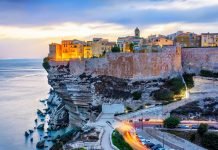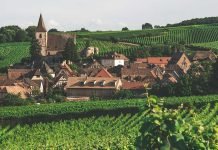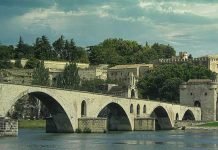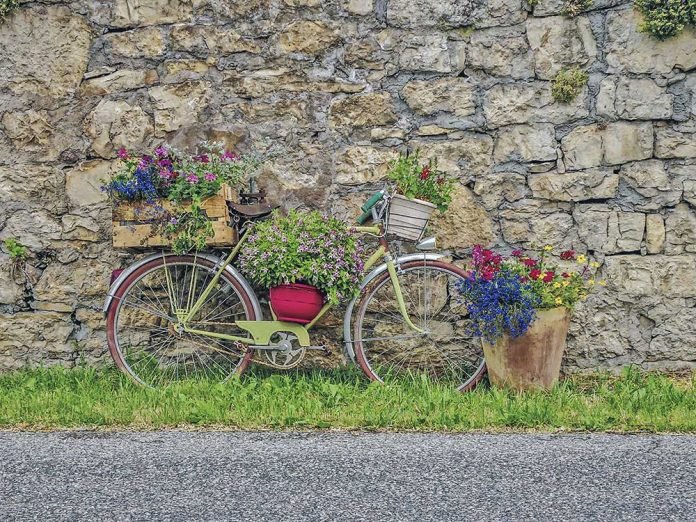Highlights
- Breathtaking alpine landscapes of the French Alps.
- World-renowned ski resorts like Chamonix, Courchevel, and Val d’Isère.
- Unique geological formation and UNESCO World Heritage site – the Chauvet-Pont-d’Arc Cave.
- The rich cultural heritage reflected in cities like Lyon and Grenoble.
- Hiking and mountaineering in the Vanoise, Écrins, and Chartreuse National Parks.
- Sampling the regional cuisine, renowned cheeses, and Rhône Valley wines.
- Exploring the historical castles such as the Château de Menthon-Saint-Bernard and Château d’Annecy.
- The vibrant arts scene, with numerous museums and galleries such as the Musée d’Art Contemporain in Lyon.
- The beautiful Romanesque and Gothic architecture of churches like Cathédrale Notre-Dame de Grenoble.
- Participation in diverse festivals celebrating everything from cinema to gastronomy.
History of Auvergne-Rhône-Alpes
Auvergne-Rhône-Alpes is a region that’s rich with history. Each city, town, and village here tells a different chapter of the region’s past, from prehistoric times through Roman colonization, Middle Ages, Renaissance, and into the present.
In the prehistoric Chauvet-Pont-d’Arc Cave, located in the Ardèche department, you can travel back in time over 30,000 years. Designated a UNESCO World Heritage site, the cave is adorned with some of the earliest known cave paintings. These intricate drawings depict a variety of animals, like cave lions, mammoths, and horses, providing valuable insights into the minds and lives of our early human ancestors.
Vienne, a city known for its rich Roman history, preserves the architectural marvels from the Roman era. Its ancient theatre, one of the largest in Roman Gaul, is a magnificent testament to Roman engineering and a symbol of the cultural life during that period. The Temple of Augustus and Livia, with its well-preserved Corinthian columns, is another iconic emblem of Vienne’s Roman past.
The region is dotted with castles, remnants of the Middle Ages, each with its unique history and architectural style. The imposing Château de Menthon-Saint-Bernard, for instance, has stood guard over Lake Annecy for over a thousand years, while the Château d’Annecy, nestled in the “Venice of the Alps”, houses a museum showcasing Alpine art and history.
The Historic Cityscape: Lyon and Grenoble
Lyon: A Journey Through Time
Lyon, a UNESCO World Heritage site and the region’s capital, is a city that wears its history with pride. The city’s architectural heritage stretches across centuries: from the ancient Roman theatres of Fourvière hill to the Renaissance-era traboules (hidden passageways) in the Old Town (Vieux Lyon), and onto the modern architecture in the Confluence district. Each neighbourhood, each building, each cobblestone street in Lyon tells a different part of the city’s 2,000-year-old tale.
Grenoble: Historical Riches Meets Contemporary Progress
Grenoble, once the capital of the historic Dauphiné region, serves as a beautiful backdrop where the past and present collide. The city, with its fortified Bastille hill and charming old town, is steeped in history. Simultaneously, it is also a contemporary scientific and technological hub, known as the ‘Capital of the Alps’, which is home to many research institutions and leading tech companies.
The Charming Towns: A Blend of Culture and Gastronomy
Lyon, recognized as a World Heritage Site, is famous not only for its history and architecture but also for its vibrant cultural scene. The city’s annual Festival of Lights (Fête des Lumières), where buildings and streets are transformed into an enchanting light display, is a cultural highlight that draws visitors worldwide.
Grenoble, aptly named the Gateway to the Alps, offers a mix of outdoor adventures, cultural activities, and innovative achievements. Its museums, such as the Musée de Grenoble, house exceptional art collections and offer an insight into the region’s historic and artistic evolution.
Saint-Étienne, a city known for its design and innovation, is a modern creative hub. The city, recognized as a UNESCO City of Design, hosts the Biennale Internationale Design Saint-Étienne, a major event on the global design calendar.
Natural Wonders and National Parks
Auvergne-Rhône-Alpes, characterized by its stunning alpine landscapes, is home to several National Parks. The Vanoise National Park, France’s first national park, the Écrins National Park, known for its diverse flora and fauna, and the Chartreuse National Park, renowned for its unique limestone cliffs and deep gorges, each offer a different flavour of the region’s natural beauty.
The region’s geological marvels are not limited to its alpine peaks. The Chauvet-Pont-d’Arc Cave, a UNESCO World Heritage site, houses some of the world’s oldest known cave art, offering a glimpse into the region’s prehistoric past.
Savouring the Flavours: Food and Wine in Auvergne-Rhône-Alpes
From rustic to gourmet, hearty to delicate, the gastronomy of Auvergne-Rhône-Alpes is as varied as its terrain. The region is a gastronomical paradise, offering a symphony of flavours that reflect its rich cultural and geographical diversity.
Lyon: The Gastronomic Capital
The city of Lyon is often hailed as the gastronomic capital of France, if not the world. The city’s traditional bouchons, cosy bistros that serve hearty Lyonnaise cuisine, are a must-visit for any food lover. Lyon’s culinary traditions emphasise simplicity and flavour, resulting in dishes like coq au vin (chicken cooked in red wine), quenelles (creamy fish dumplings), and salade lyonnaise (a salad topped with bacon, croutons, and a poached egg) that are satisfying in their rustic richness.
Savoyard Cuisine: Comfort Food at Its Best
Savoyard cuisine, originating from the high-altitude regions of Savoy, is best known for its comfort food perfect for cold winter nights. Fondue savoyarde, where crusty bread is dipped into a pot of melted local cheeses like Comté, Beaufort, and Reblochon, is the region’s signature dish. Tartiflette, a hearty casserole of potatoes, reblochon cheese, lardons, and onions, is another much-loved regional speciality.
A Legacy of Cheeses
Auvergne-Rhône-Alpes has a pastoral heritage deeply interwoven with cheese-making. The region is home to several AOP (Appellation d’Origine Protégée) cheeses, each one reflecting the unique terroir where it is produced. Comté, a nutty and slightly sweet cheese, is produced in the Jura Mountains, while Bleu d’Auvergne, a creamy and tangy blue cheese, originates from the volcanic soils of Auvergne. Reblochon, a soft washed-rind cheese with a subtly fruity taste, hails from the Savoy region.
The Wines of the Rhône Valley
The wines of Auvergne-Rhône-Alpes, particularly those from the Rhône Valley, are as diverse as the region’s food. The Rhône Valley, stretching from Lyon to the southern edge of the region, is one of the oldest and most prestigious wine-growing areas in France.
The vineyards in the northern Rhône produce powerful, full-bodied reds from the Syrah grape, most notably in appellations like Côte-Rôtie and Hermitage. These wines are known for their complex flavours of dark fruit, pepper, and spice, balanced by a vibrant acidity.
The southern Rhône, on the other hand, is known for its blended wines. The reds, often Grenache-based, are generous and warm, reflecting the Mediterranean influence on the region’s climate. The whites, such as those from the Condrieu appellation made exclusively from Viognier, are aromatic and lush, with flavours of ripe peach, apricot, and floral notes.
No matter where your culinary preferences lie, Auvergne-Rhône-Alpes has something to offer. With its regional delicacies, renowned cheeses, and diverse wines, the region provides a gastronomic experience that is both rich and unforgettable.
Immerse in Art and History: Cultural Attractions and Landmarks of Auvergne-Rhône-Alpes
Auvergne-Rhône-Alpes boasts a wealth of cultural attractions and landmarks that encapsulate the region’s rich history and vibrant contemporary scene. From art museums and historical churches to impressive castles, this region is a true cultural and historical treasure trove.
A Museum for Every Art Lover
Art enthusiasts will be spoilt for choice in this region. In Lyon, the modern Musée d’Art Contemporain (Museum of Contemporary Art) curates exhibitions that continuously evolve, with no permanent collections but a continuous flow of temporary shows that keep the content fresh and dynamic. The museum’s innovative approach to showcasing contemporary art truly sets it apart.
On the other hand, the Museum of Fine Arts of Lyon, housed in a former 17th-century Benedictine convent, is one of the most important art museums in France. It offers a broad collection ranging from Ancient Egyptian antiquities to Modern art, showcasing works by renowned artists such as Delacroix, Monet, and Picasso.
In Grenoble, the Musée de Grenoble holds one of the premier collections of art in France. The museum’s exhibits range from ancient Egyptian artefacts to 20th-century modern art, featuring masterpieces by artists like Renoir, Matisse, and Andy Warhol.
Architectural Wonders: Cathedrals and Basilicas
Auvergne-Rhône-Alpes also houses some stunning examples of Romanesque and Gothic architecture. The Cathédrale Notre-Dame de Grenoble, a stunning Romanesque-Gothic hybrid, captivates with its austere exterior and intricately painted interior.
In Lyon, the Basilica of Notre-Dame de Fourvière, perched atop Fourvière Hill, overlooks the city with its imposing presence. The basilica, a blend of Romanesque and Byzantine architectural styles, is known for its ornate interior adorned with mosaics, stained glass, and golden statues, offering an exquisite spectacle for the eyes.
Castles Through the Ages
The region’s history comes to life through its array of picturesque castles. The Château de Menthon-Saint-Bernard, perched on a rocky outcrop overlooking Lake Annecy, appears like something out of a fairytale. With over a thousand years of history, the castle houses more than 100 rooms filled with ancient manuscripts, period furniture, and other precious artefacts.
The Château d’Annecy, nestled in the heart of the “Venice of the Alps”, was once the residence of the Counts of Geneva and the Dukes of Genevois-Nemours. Today, it houses a museum displaying Alpine art and culture, alongside breathtaking views of the town and the surrounding lake and mountains.
Through these cultural attractions and landmarks, Auvergne-Rhône-Alpes offers its visitors a chance to dive deep into its cultural landscape, spanning history, art, and architecture. It’s a region where the past and present harmoniously intersect, creating a diverse cultural scene that caters to a myriad of tastes and interests.
Auvergne-Rhône-Alpes, with its rich history, cultural vibrancy, and extraordinary natural beauty, truly offers an unparalleled experience, weaving together the threads of gastronomy, history, nature, and culture into an unforgettable tapestry. It is, indeed, a gem of the Southeast waiting to be discovered and cherished.

















